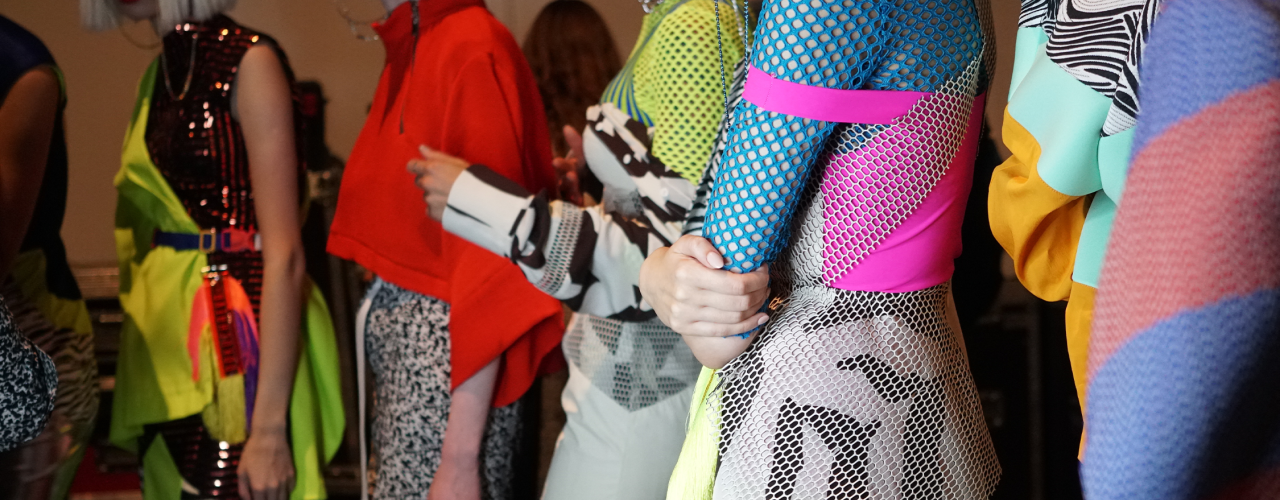SUSTAINABLE STRATEGY

The EU Textile Strategy: A Focus on Design

Designers are at the centre of the fashion design process but it’s become apparent over time that designers are often segregated from certain decision making when it comes to the entire lifecycle of a garment from fibre to end-of-life. This has become more common since the rise of high fashion, but now as we enter a new fight to save the planet, new rules are being made.
The EU textile strategy covers a plethora of areas within a hefty roadmap for a better and more economically and ecologically sound future as various industries and businesses – from banking and healthcare to automotive industries and beyond, work simultaneously on the European Green Deal.

The three overarching focuses of the deal are to ensure that we have no net emissions of greenhouse gases by 2050; economic growth decoupled from resource use; and no person and no place left behind. Within this, the EU strategy for sustainable and circular textiles has developed its own clear plan to help move in the right direction by focusing on specific elements from within the industry.
The commission has outlined the following points:
PRODUCT DURABILITY, RELIABILITY, REUSABILITY, UPGRADABILITY, REPARABILITY, EASE OF MAINTENANCE AND REFURBISHMENT
The design process needs to become far more inclined to research these methodologies in order to create products, whether new or recycled, in the best way possible for a more circular and safe industry. This doesn’t mean that the creative process is hindered, but it will create a barrier at times that designers will have to navigate, making the design process more challenging, but equally exciting.
RESTRICTIONS ON THE PRESENCE OF SUBSTANCES THAT INHIBIT THE CIRCULARITY OF PRODUCTS AND MATERIALS
Designers need to become more aware of their choices from the onset. Having a deeper understanding of materials beyond aesthetics and instead, having a wider knowledge of the processes of fibres and yarns before they even make it into a design highlights that education is a core element to progressing...
ENERGY USE OR ENERGY EFFICIENCY OF PRODUCTS
Something that is often forgotten within the design process is the element of energy. This has been an element largely linked between fast fashion and larger productions and is not often a designer’s duty. Nor is it an element easy to calculate.
Whilst this needs to be addressed far widely within large scale production, this does need to be addressed at a smaller scale and the best, and perhaps the easiest way, is by identifying the controllable elements of energy use within production.
RESOURCE USE OR RESOURCE EFFICIENCY OF PRODUCTS
This falls into a very similar category to energy and does mean that designers need to start looking at resources more broadly. It’s hard to think about the elements of fashion which aren't directly linked to your job role’s purpose, but being aware of each stage of the fashion production process is becoming an inevitable component to a designer’s job role.
MINIMUM RECYCLED CONTENT IN PRODUCTS
It’s likely that a minimum quota for recycled materials is to be used in designs but this isn’t enough without considering the impact of the products whether in the recycling process, preparation, or manufacture of the recycled elements. It’s an area that has to be treated with caution.
EASE OF DISASSEMBLY, REMANUFACTURING AND RECYCLING OF PRODUCTS AND MATERIALS
The easier something is to mend or recycle, the more likely it is that it will be mended or recycled. This sounds obvious, but it’s not often an idea explored within the design and manufacture of a product that often, but more often than not, is down to an end user’s own creativity. But giving the end user a stronger chance by using recyclable materials for example, brings the industry closer.
LIFE CYCLE ENVIRONMENTAL IMPACT OF PRODUCTS, INCLUDING THEIR CARBON AND ENVIRONMENTAL FOOTPRINT
This is possibly the biggest point of them all as it’s the overarching element of them all and looked at independently is to assess a product’s independent impacts.
PREVENTING AND REDUCING WASTE, INCLUDING PACKAGING WASTE
Packaging waste comprises swing tags as well as often overly packaged products which come delivered in plastic bags (often non-biodegradable), excess packaging, large boxes and bags. These are often unnecessary. In what ways can we reduce waste at this stage, to prevent waste at the consumer level?

One of the ways scrap textiles from production can be used is by taking fabric remnants to create swing tags whilst using potato-starch-derived bags and other biodegradable materials are ways to look at packaging solutions.
In a nutshell, textiles should be designed to ensure that they last longer and become easier to repair and recycle. And whilst this sounds like a basic element to the entire strategy, it encompasses the entire design process meaning that designers will likely spend more time in the development phases of products before taking them anywhere near the production process.















